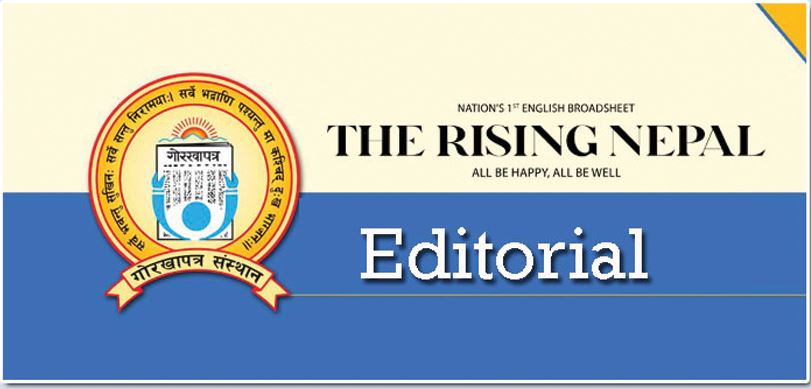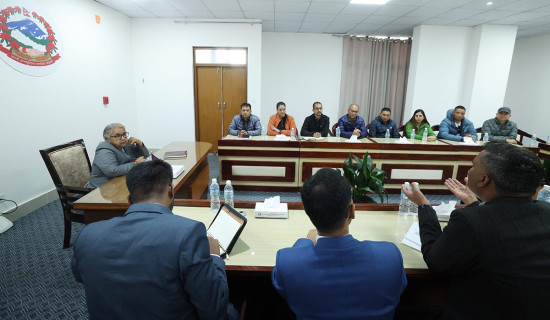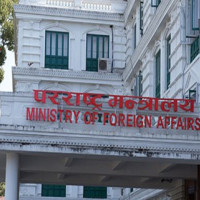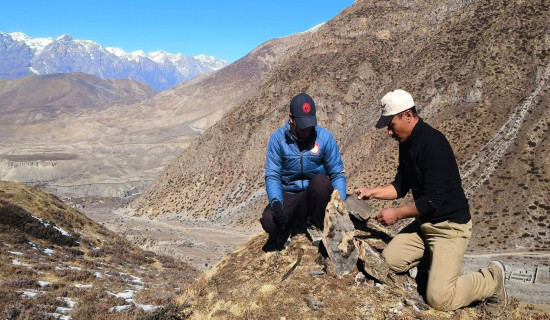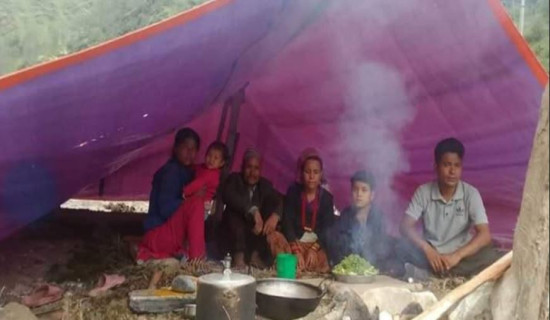- Monday, 1 December 2025
Cryosphere Risks
Rapidly retreating glaciers in the high Himalayas are among the most striking examples of climate change. As glaciers melt faster than ever, new hazards are emerging, imperilling the entire ecosystems nurtured by them. A recent study about a 2024 glacial lake outburst flood (GLOF) in the Everest region has found that a devastating and complex chain reaction of natural factors made the flood even more destructive.
Citing the study report the International Centre for Integrated Mountain Development (ICIMOD) said the disaster on August 16, 2024, wiped out Thame, a famous mountain village in Solukhumbu. A rock avalanche triggered a powerful displacement wave when it hit a glacial lake at 4,900 metres, releasing 156,000 cubic metres of water. This went on to cause erosion and landslides and carried large quantities of debris as it moved downward, ultimately covering the entire valley floor near the Thame village. The flood caused extensive destruction to homes, a school, a health post, a bridge, and a hydropower plant.
The country is said to have seen over 90 GLOFs since the early 1920s, and the Everest region has experienced five significant such events in less than 50 years. GLOFs are among the most destructive and prominent hazards in high-mountain regions. Capable of releasing millions of cubic metres of water and debris within hours, they can cause catastrophic damage downstream, unleashing torrents of water that obliterate communities, devastate infrastructure and permanently alter landscapes.
The accelerating impacts of climate change, particularly in the Hindu Kush Himalaya (HKH), which is warming at an average of 0.28 degrees Celsius per decade (nearly three times faster than the global average), are experiencing unprecedented glacier mass loss, which has increased by 65 per cent in recent decades. This rapid glacier retreat is found to have fuelled the proliferation of over 25,000 glacial lakes across the region. The ICIMOD has warned that the Thame disaster is the latest in a series of events to call for the government to translate cryospheric and disaster-related science into actionable policy.
Ironically, the countries largely responsible for the climate crisis have either been too slow to act to reduce their carbon emissions or have failed to follow through on their climate commitment. Unless they act on a war footing, our race to avert climate catastrophe might derail or fall woefully short. Anyway, given the monumental scale of the cryosphere hazard, there's no time to waste on our part. The sooner we act, the more able we will be to save at-risk lives. The entire downstream settlement must be relocated to safety. Should critical infrastructure be built there, a thorough assessment must be done to keep it up and running in the event of a disaster.
What better way to address the risk than making good use of the Green Climate Fund (GCF), which in July approved a $36.1 million grant to help Nepal reduce the growing threat of GLOFs in the Himalayas? The approval has marked a new chapter in how Nepal prepares to deal with climate risk, going from reacting to a disaster to working in advance to mitigate its impacts. This laudable proactive measure should be implemented in its letter and spirit. Mitigating the risk also involves fulfilling the urgent need for putting up more hydrological and meteorological monitoring stations that generate real-time information to keep people there informed 24/7 and act on it if or when needed.

